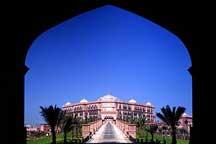 Apr. 2, 2025
Apr. 2, 2025
Weather
中国龙 Chinese Dragon
2009-08-18 11:34 BJTWATCH VIDEO
因此在龙的身上可以看到许多动物的影子。
This is why the images of many animals can be found in the dragon.
在中国的神话与传说中,龙的形象具有蛇身、蜥脚、鹰爪、蛇尾、鹿角和鱼鳞。
In the Chinese folklore, the dragon has a snake’s body, a lizard’s legs, an eagle’s claws, a snake’s tail,a deer’s antler, and a fish’s scales.
在中国人心目中,龙是一种具有超凡力量的神异动物,被中国先民作为祖神敬奉。
For the Chinese, it has long been a potent symbol of auspicious power, and is therefore worshipped religiously.
龙还能控制天气,能兴云雨,利万物。
It is also associated with the weather, as the bringer of rain and water.
中国人常常自称为“龙的传人”。
Many Chinese people often use the term “Descendants of the Dragon” as a sign of ethnic identity.
在封建社会里,龙的形象一直是皇帝和皇权的象征。
During the feudal period, the dragon served as the symbol of the emperors and imperial authority.
历代帝王都自称是龙的化身。
The rulers of every dynasty referred to themselves as the incarnation of the dragon.
因此他们使用的物品大多都装饰有龙的图案。
This is why everything in the imperial palace was decorated with dragon designs.
据说,在清朝皇宫的主殿“太和殿”里,就装饰有大大小小12654条龙。
It is said that there were 12,654 dragon decorations in the “Taihe Palace” alone, the main lobby of the Qing Dynasty imperial palace.
而整个皇宫里的龙,就更是不计其数了。
Considering this, the total number of dragons in the entire palace must be countless.
中国的民俗节日中,有不少是与龙有关的。
Many of China’s folk celebrations are dragon-related.
 Mail
Mail Share
Share Print
Print


 Video
Video









 2009 China Central Television. All Rights Reserved
2009 China Central Television. All Rights Reserved